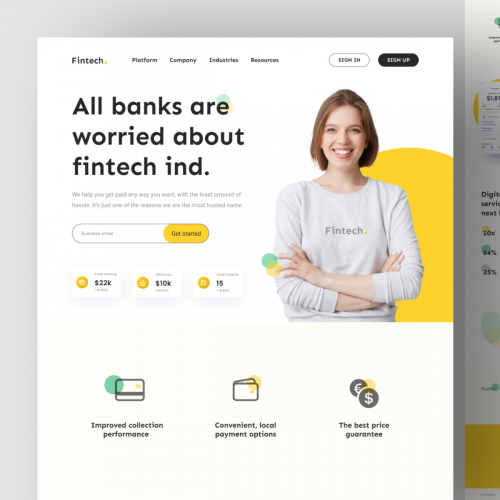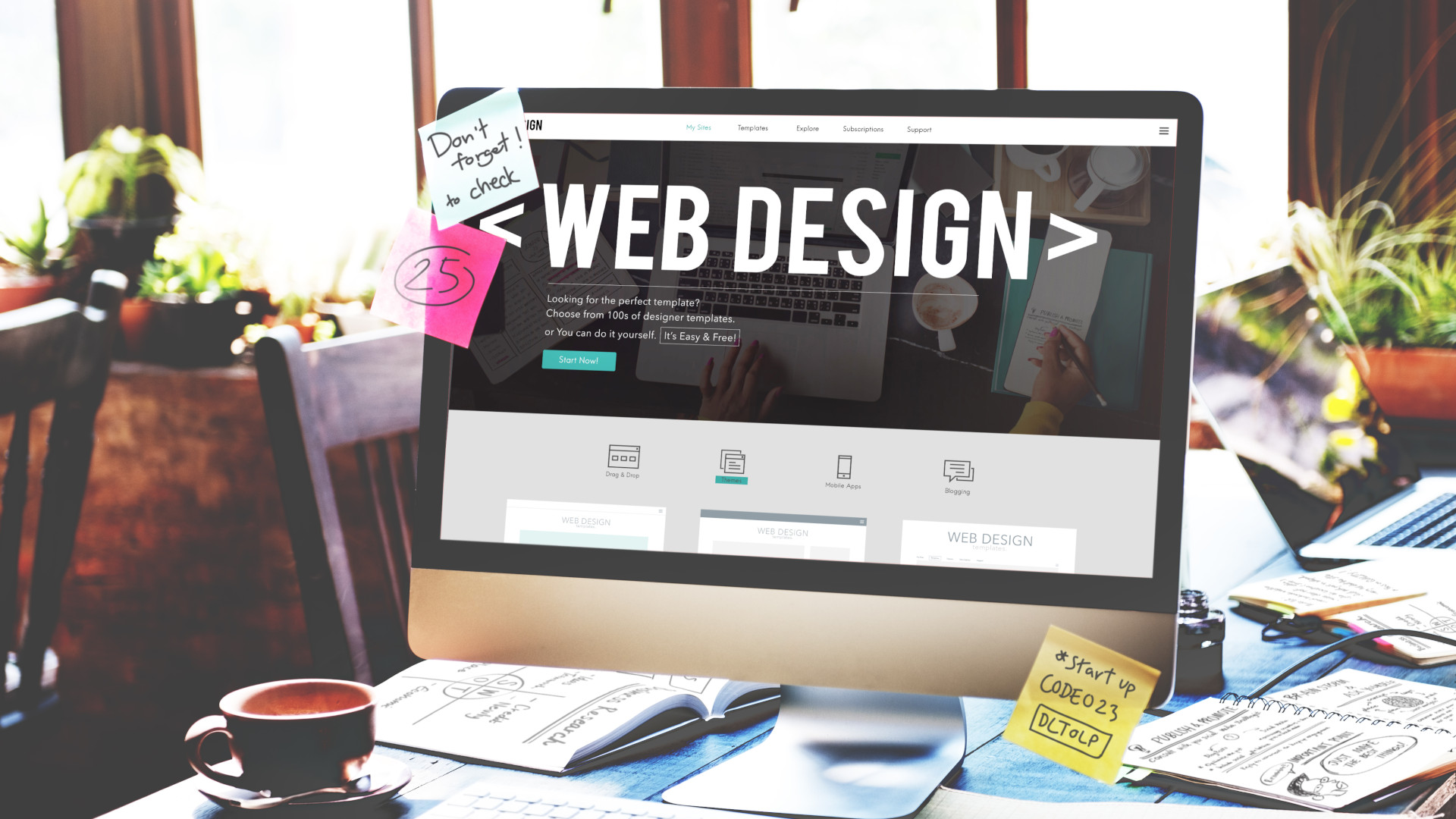Website Design in copyright: User-Friendly, Fast, and Responsive Websites
Website Design in copyright: User-Friendly, Fast, and Responsive Websites
Blog Article
Achieve Online Success With User-Friendly Site Style
In the increasingly affordable electronic landscape, the layout of a web site can be a critical variable in identifying a company's success. Straightforward design not just boosts the general individual experience however additionally influences essential metrics such as conversion, retention, and engagement prices.
Value of Customer Experience
Individual experience (UX) plays a critical role in the success of a site, as it directly affects user satisfaction and engagement. A positive UX guarantees that visitors can navigate the site effortlessly, accessibility details rapidly, and complete wanted activities, such as making an acquisition or signing up for a newsletter, without disappointment.
In a digital landscape where competition is tough, an internet site that focuses on UX can considerably improve brand commitment and retention. Individuals are much more most likely to return to a website that supplies a smooth experience, producing a cycle of repeat sees and raised client life time worth. Effective UX layout can decrease bounce prices, as customers are less likely to leave a website that meets their requirements efficiently.
Furthermore, search engines progressively take into consideration customer experience factors when ranking websites. Thus, investing in user experience is vital for accomplishing lasting success in the electronic market.
Secret Principles of User-Friendly Style
A successful easy to use style rests on several key principles that enhance use and accessibility. Most importantly is simplicity; a clutter-free interface enables customers to navigate effortlessly, reducing cognitive tons. This principle stresses the importance of succinct and clear material, permitting customers to find info swiftly without unneeded distractions.
Consistency is one more vital component. Regular use colors, fonts, and formats promotes familiarity and constructs count on. Customers must feel comfy as they explore various sections of the web site, knowing that comparable aspects signify relevant performances.
Effective typography additionally plays a critical function in user-friendly layout. Readable typefaces, proper sizes, and adequate spacing ensure that content is easily readable across different tools. Moreover, integrating instinctive aesthetic hierarchies aids users determine key info and activities at a look.

Vital Attributes for Navigating
Efficient navigating is critical for any user-friendly site, as it straight affects the total customer experience. A well-structured navigating system allows users to locate information rapidly and effectively, minimizing aggravation and boosting interaction.
One necessary attribute is a clear and intuitive food selection that classifies web content practically - website design copyright. This food selection ought to be easily obtainable from every web page, usually positioned on top or on the side of the website. In addition, including breadcrumb navigating assists users understand their area within the website pecking order and makes it simpler to backtrack
Search functionality is an additional crucial element, allowing users to locate certain material without sifting via several pages. This feature needs to be plainly displayed and receptive to variations in input.
Moreover, a mobile-responsive layout makes sure that navigation continues to be seamless throughout devices. As mobile usage remains to rise, menus ought to adjust to different screen read review sizes without compromising functionality.
Lastly, visual hints such as highlighting the active web page and using hover effects can boost individual communication. By incorporating these vital functions, website developers can create a navigational experience that is not just straightforward however also motivates exploration and retention.
Access Considerations
Access considerations are essential to creating an easy to use website that provides to all individuals, no matter of their handicaps or capacities (website design copyright). Websites should be made to make certain that individuals with aesthetic, acoustic, cognitive, or motor impairments can involve with content successfully. This begins with adherence to the Internet Material Ease Of Access Guidelines (WCAG), which give a structure for making electronic content much more available
Secret methods consist of the usage of detailed different message for photos, making sure color contrast ratios satisfy access requirements, and providing subtitles for multimedia elements. Additionally, the navigating needs to be user-friendly, allowing users to tab through web links and interactive components quickly. Executing key-board navigation is important for those incapable to make use of a mouse.
In addition, succinct and clear language enhances comprehension for individuals with cognitive constraints. Kinds should be simple, with tags and guidelines that are understandable. Routine availability screening, consisting of individual comments from individuals with impairments, can assist identify obstacles read the full info here and enhance use.
Determining Style Success

Individual responses studies and use testing are vital in examining the effectiveness of layout elements. These techniques permit developers to collect straight input from customers, identifying pain points and locations for improvement. Additionally, tracking heatmaps can disclose where individuals click most often, assisting to inform format changes and material prioritization.
Analytics devices play a vital function in gauging layout success by giving data-driven insights. Google Analytics can track customer habits, exposing patterns that indicate whether the style is preventing the customer or facilitating journey. Ultimately, a successful website design not only satisfies organization goals but likewise cultivates a satisfying and seamless individual experience, driving engagement and loyalty over time. Consistently reviewing these metrics ensures that the website progresses in positioning with customer needs and industry ideal practices.
Final Thought
To conclude, user-friendly website layout is vital for accomplishing on the internet success. Focusing on customer experience with simpleness, user-friendly navigation, and reliable feedback devices not only enhances user involvement and satisfaction but likewise fosters brand name commitment. Integrating important navigation features and access factors to consider additionally makes certain that all customers can efficiently communicate with the site. Ultimately, determining design success gives beneficial understandings that assist continuous renovation, strengthening a solid online visibility in a competitive electronic landscape.
Web sites should be made to make sure that users with aesthetic, acoustic, cognitive, or motor disabilities can involve with material effectively.Measuring design success includes examining exactly how effectively an internet site meets its desired goals while providing a favorable user experience. Google Analytics can track customer behavior, revealing patterns that indicate whether the layout is preventing the user or promoting journey. Inevitably, a successful internet site layout not just satisfies service goals however likewise cultivates a enjoyable and seamless customer experience, driving involvement and loyalty over time. Prioritizing user experience through simpleness, intuitive navigation, and efficient responses devices not just boosts see this user interaction and fulfillment yet also promotes brand name loyalty.
Report this page